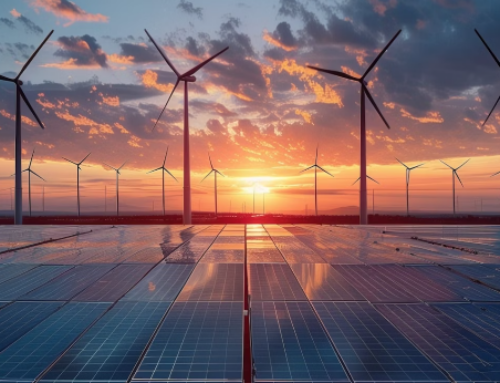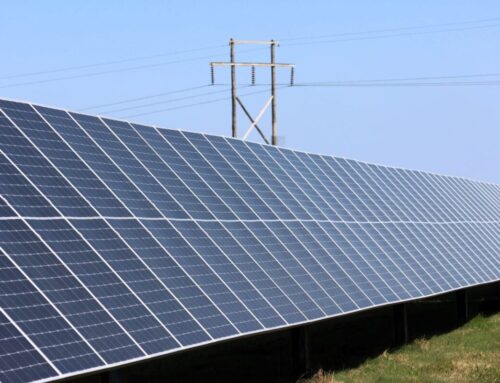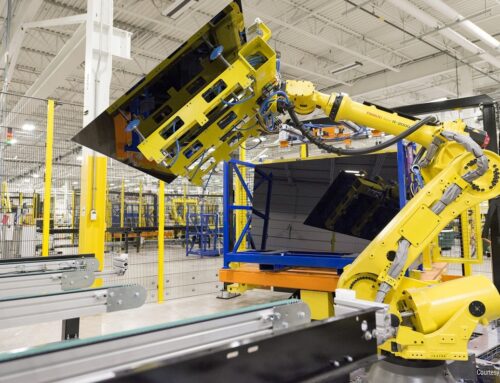New device sets energy storage record, offers 14.9% solar utilization
September 22, 2024
The team has pioneered a hybrid device, the first of its kind, that integrates a silicon solar cell with an innovative storage system known as MOST.
Updated: Sep 22, 2024 07:15 AM EST
This hybrid device could transform solar energy capture and storage. The image is of MOST-PV hybrid device.
To increase solar adoption across the globe, researchers have developed an innovative hybrid device that aims to address the challenge of the intermittent nature of solar energy production.
This device combines, “for the first time ever,” two technologies: molecular solar thermal energy storage and traditional silicon-based photovoltaic energy. Notably, it has set a new benchmark for energy storage efficiency and achieved a high total solar energy utilization efficiency.
Photovoltaic solar energy is highly critical in renewable energy by converting sunlight into electricity. “But it still presents challenges due to intermittent solar production and fluctuating energy demand,” said the researchers.
So, to bridge the gap between when energy is produced and when it is consumed, efficient energy storage systems are essential. They will ensure a reliable power supply.
“However, these technologies still do not perform optimally, mainly due to the heating they experience, which affects energy production and the durability of photovoltaic systems,” said the research team led by ICREA professor Kasper Moth-Poulsen from the Barcelona East School of Engineering (EEBE).
“Additionally, current storage technologies, such as batteries, rely on unsustainable materials.”
The innovative MOST system
To tackle these issues, the team has developed “the first hybrid device” that combines a silicon solar cell with an innovative storage system called MOST, which stands for molecular solar thermal energy storage systems.
MOST uses organic molecules that change when they absorb high-energy photons like ultraviolet light. These molecules can capture and store energy for later use.
“A particular feature of the system is that these molecules also provide cooling to the photovoltaic cell by acting as an optical filter and blocking photons that would normally cause heating and reduce system efficiency,” the team added.
Besides, the MOST system is more sustainable than traditional methods.
“Unlike other technologies that rely on scarce materials, the MOST system uses common elements such as carbon, hydrogen, oxygen and nitrogen,” mentioned the team in a press release.
Impressive performance and efficiency
In practical tests, the device has demonstrated impressive results. It achieved a record-setting energy storage efficiency of 2.3%, specifically for storing molecular thermal solar energy.
One of the key features of this innovation is its ability to lower the temperature of photovoltaic cells by as much as 8°C.
This reduction in heat minimizes energy losses, thereby increasing the cells’ efficiency by 12.6%.
“The combined device operates with a solar utilization efficiency of up to 14.9%, which represents an improvement over the two hybrid solar systems operating independently,” emphasized the press release.
Global clean energy transition
By effectively combining these two systems, the device ensures enhanced performance and a more reliable energy output.
It also lessens the environmental impact of traditional energy storage methods like batteries, which often rely on scarce and harmful materials.
Integrating photovoltaic energy with molecular thermal storage is a vital step toward a cleaner and more efficient energy future.
This hybrid device has the potential to revolutionize how we capture and store solar energy. It addresses the urgent need for clean energy and efficient storage.
RECOMMENDED ARTICLES
By boosting energy efficiency and reducing dependency on fossil fuels, this innovation offers a sustainable solution to meet the increasing global energy demands.
The Blueprint Daily
Stay up-to-date on engineering, tech, space, and science news with The Blueprint.
By clicking sign up, you confirm that you accept this site’s Terms of Use and Privacy Policy
ABOUT THE EDITOR
Aman Tripathi An active and versatile journalist and news editor. He has covered regular and breaking news for several leading publications and news media, including The Hindu, Economic Times, Tomorrow Makers, and many more. Aman holds expertise in politics, travel, and tech news, especially in AI, advanced algorithms, and blockchain, with a strong curiosity about all things that fall under science and tech.
POPULAR ARTICLES
RELATED ARTICLES
Search
RECENT PRESS RELEASES
BlackRock Bitcoin ETF demands 12-hour BTC withdrawals from Coinbase
SWI Editorial Staff2024-09-23T09:50:15-07:00September 23, 2024|
EVs are cleaner than gas cars, but a growing share of Americans don’t believe it
SWI Editorial Staff2024-09-23T07:54:08-07:00September 23, 2024|
Environment Takes Centre Stage As Global Summits Loom
SWI Editorial Staff2024-09-23T07:54:07-07:00September 23, 2024|
New Hampshire Lawmakers Prepare Marijuana And Psychedelics Bills For 2025 Legislative Session
SWI Editorial Staff2024-09-23T07:52:27-07:00September 23, 2024|
Meta Platforms price target raised to $645 from $580 at Citi
SWI Editorial Staff2024-09-23T09:55:38-07:00September 23, 2024|
Snap CEO Says Meta and Apple Will Follow its Lead in AR Smart Glasses
SWI Editorial Staff2024-09-23T07:49:24-07:00September 23, 2024|
Related Post




